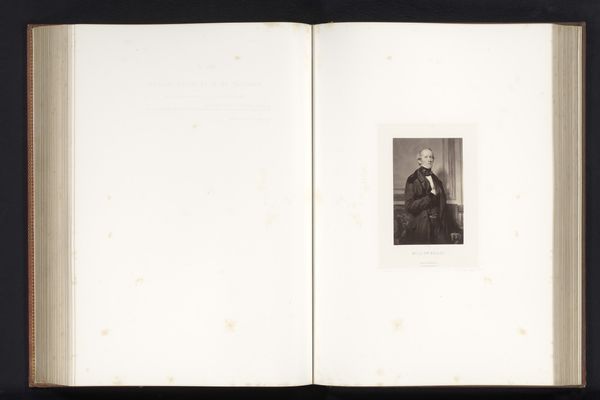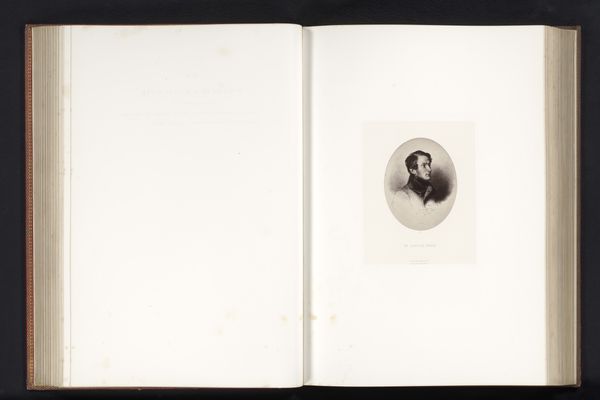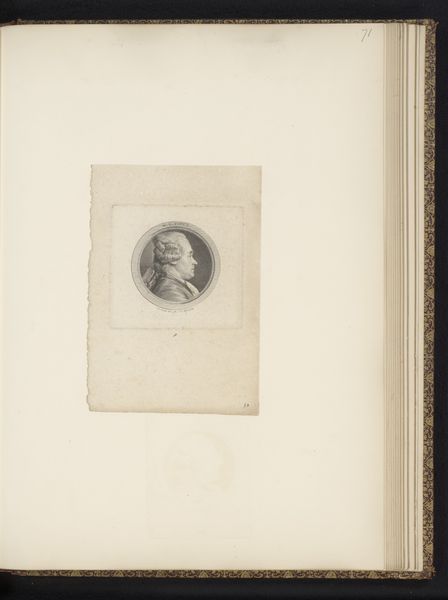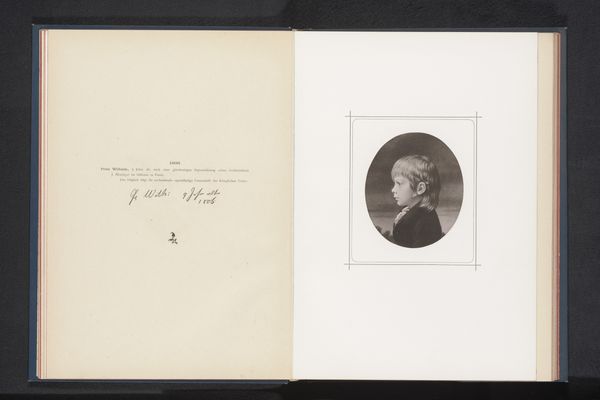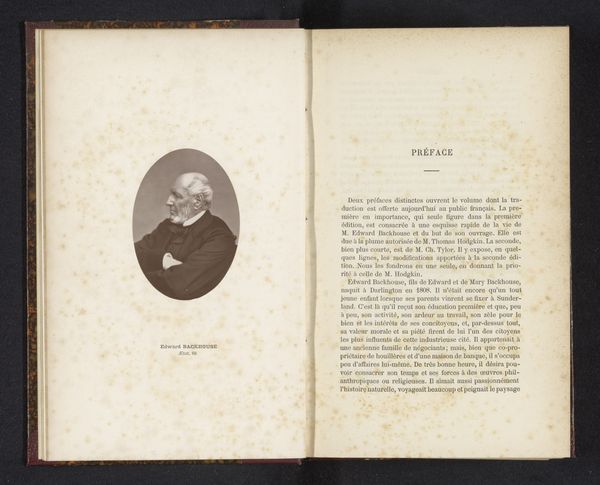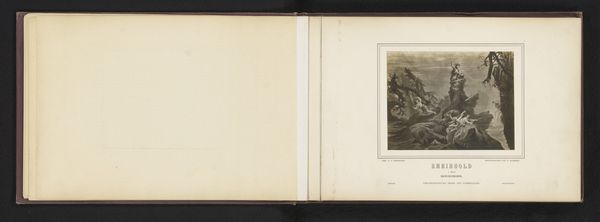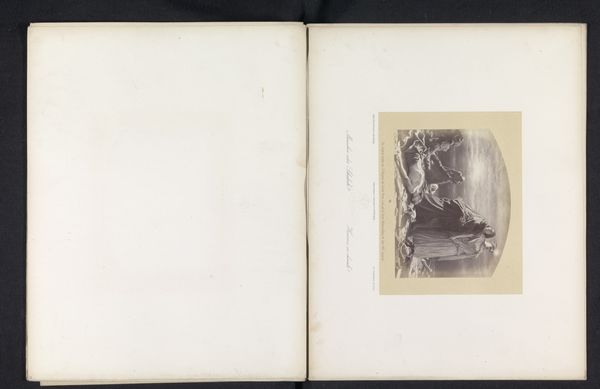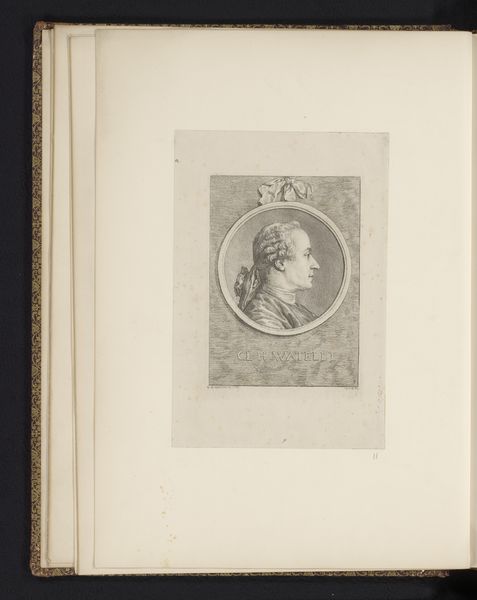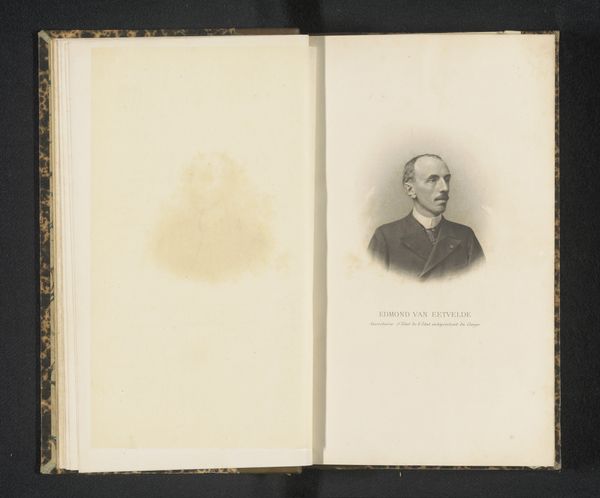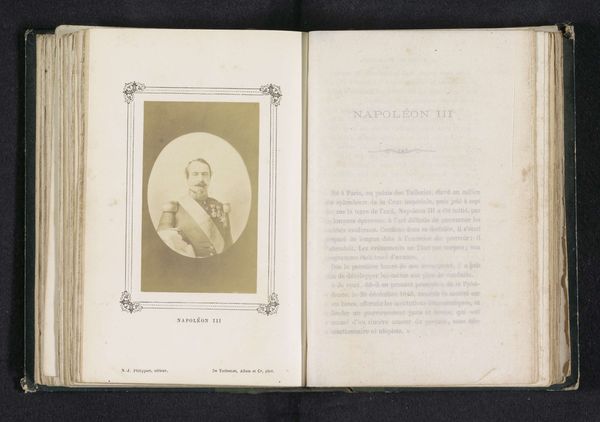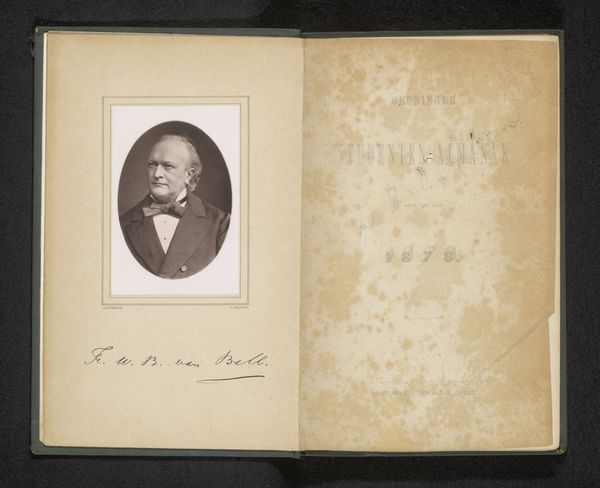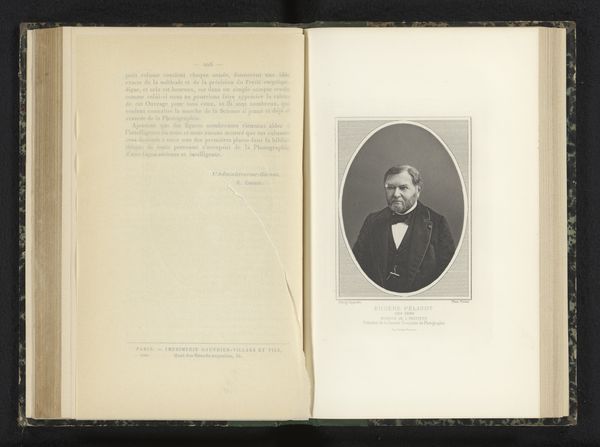
drawing, paper
#
portrait
#
drawing
#
aged paper
#
homemade paper
#
paper non-digital material
#
paperlike
#
sketch book
#
personal journal design
#
paper texture
#
paper
#
personal sketchbook
#
folded paper
#
design on paper
#
realism
Dimensions: height 134 mm, width 99 mm
Copyright: Rijks Museum: Open Domain
Editor: This is a photographic reproduction of a drawn portrait of Bernardus Ledeboer, created in 1877. What strikes me is how intimate it feels, like stumbling upon a page in someone's personal sketchbook. What do you see in this work? Curator: Well, let’s consider the material conditions first. It's a reproduction, so we're already dealing with layers of removal from the "original" artistic gesture. The choice of paper, its texture, the way it's been aged – these elements weren’t simply chosen; they reflect a certain access to resources, a specific set of material practices related to image circulation in 1877. Editor: So, the material implies a certain socio-economic background for both the artist and, presumably, the person who owned this sketchbook? Curator: Precisely! And think about the labour involved. Making paper by hand was still practiced, though increasingly rare given industrial production, this may suggest either the paper was handmade. Or even made to appear such. The choice and application hold meaning within its context, the time of its making, it might attempt to present the depicted with further gravitas and history than might actually exist. Editor: That's fascinating! I hadn’t thought about how the paper itself tells a story about production and consumption. Curator: It all boils down to this: even what seems like a simple portrait is embedded in a complex web of material realities and social relationships. So it's less about 'who is he?', or even how 'well' the drawing is made but 'how did he become visible to us?', and, ultimately, what and how much does he own? Editor: I see what you mean. It completely reframes my understanding of the piece. Thanks. Curator: And thank you! Paying attention to these material details gives you a language to describe its historical conditions that brought it to you today!
Comments
No comments
Be the first to comment and join the conversation on the ultimate creative platform.
